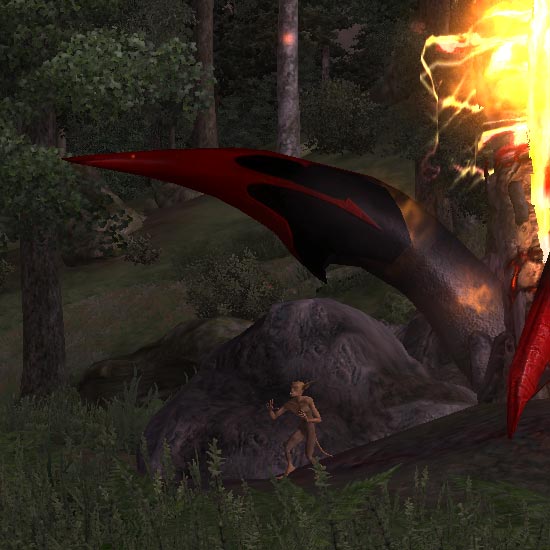NVIDIA's GeForce 8800 (G80): GPUs Re-architected for DirectX 10
by Anand Lal Shimpi & Derek Wilson on November 8, 2006 6:01 PM EST- Posted in
- GPUs
Image Quality: Summing it All Up
With NVIDIA's new method of acquiring a more detailed blur via CSAA, angle independent anisotropic filtering, and high performance with Transparency AA, potential image quality is improved over G70 and R580. The new architecture is capable of floating point frame buffer blends and antialiasing of floating point data. ATI has continually called this ability HDR+AA, and while it is better to be able to use full floating point for HDR, this isn't the only solution to the problem. There are some rendering techniques that employ MRTs (Multiple Render Targets) that will still not allow AA to be performed on them alongside HDR. There are also HDR techniques that allow antialiasing to be performed along with HDR without the need for AA + floating point (like games based on Valve's Source engine).
In any case, we've already covered the major differences in AA and AF modes and we even looked at how the optimizations affect image quality. For this section, we'll take a look at three different cases in which we employ the non-AA graphics settings we will be using in our performance tests. We are looking for differences in alpha blending, effective AF level in a game, and shader rendering. We didn't see anything that stood out, but feel free to take a look for yourselves.

G70 G80 ATI
Hold mouse over links to see Image Quality











111 Comments
View All Comments
haris - Thursday, November 9, 2006 - link
You must have missed the article they published the very next day http://www.theinquirer.net/default.aspx?article=35...">here. saying they goofed.Araemo - Thursday, November 9, 2006 - link
Yes I did - thanks.I wish they would have updated the original post to note the mistake, as it is still easily accessible via google. ;) (And the 'we goofed' post is only shown when you drill down for more results)
Araemo - Thursday, November 9, 2006 - link
In all the AA comparison photos of the power lines, with the dome in the background - why does the dome look washed out in the G80 images? Is that a driver glitch? I'm only on page 12, so if you explain it after that.. well, I'll get it eventually.. ;) But is that just a driver glitch, or is it an IQ problem with the G80 implementation of AA?bobsmith1492 - Thursday, November 9, 2006 - link
Gamma-correcting AA sucks.Araemo - Thursday, November 9, 2006 - link
That glitch still exists whether or not gamma-correcting AA is enabled or disabled, so that isn't it.iwodo - Thursday, November 9, 2006 - link
I want to know if these power hungry monster have any power saving features?I mean what happen if i am using Windows only most of the time? Afterall CPU have much better power management when they are idle or doing little work. Will i have to pay extra electricity bill simply becoz i am a cascual gamer with a power - hungry/ ful GPU ?
Another question pop up my mind was with CUDA would it now be possible for thrid party to program a H.264 Decoder running on GPU? Sounds good to me:D
DerekWilson - Thursday, November 9, 2006 - link
oh man ... I can't believe I didn't think about that ... video decoder would be very cool.Pirks - Friday, November 10, 2006 - link
decoder is not interesting, but the mpeg4 asp/avc ENCODER on the G80 GPU... man I can't imagine AVC or ASP encoding IN REAL TIME... wow, just wooowwwI'm holding my breath here
Igi - Thursday, November 9, 2006 - link
Great article. The only thing I would like to see in a follow up article is performance comparison in CAD/CAM applications (Solidworks, ProEngineer,...).BTW, how noisy are new cards in comparison to 7900GTX and others (in idle and under load)?
JarredWalton - Thursday, November 9, 2006 - link
I thought it was stated somewhere that they are as loud (or quiet if you prefer) as the 7900 GTX. So really not bad at all, considering the performance offered.